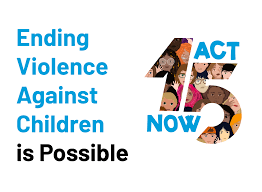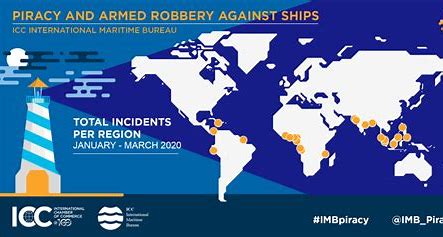Introduction

Fighting against crime is a complex endeavor that involves various strategies and approaches at different levels of society. Here’s a detailed overview of the fight against crime, including its characteristics and some of the key aspects involved:
Understanding Crime
Crime refers to any act or omission that violates a law and is punishable by the state. It encompasses a wide range of behaviors, including theft, assault, murder, fraud, drug trafficking, and more.
Crimes can be classified into various categories such as violent crimes, property crimes, white-collar crimes, organized crimes, cybercrimes, and so on.
Characteristics of Crime

:Crime often occurs as a result of complex social, economic, and psychological factors, including poverty, inequality, lack of education, unemployment, substance abuse, and mental health issues.
Behavior of criminalCriminal behavior can be influenced by individual factors such as personality traits, upbringing, peer pressure, and environmental factors such as neighborhood crime rates and community cohesion.
Crime tends to be opportunistic, with offenders seeking out vulnerable targets or exploiting weaknesses in security systems.
Criminal activities may also be organized and carried out by criminal enterprises or networks, which operate for profit and may engage in various illegal activities on a large scale.
Approaches to Fighting Crime:
Law Enforcement:

This involves the efforts of police departments, investigative agencies, and other law enforcement bodies to prevent, detect, and prosecute criminal activities. It includes patrolling, surveillance, intelligence gathering, and forensic analysis.
Prevention and Intervention
Crime prevention strategies aim to address the root causes of crime and reduce the opportunities for criminal behavior. This includes community policing, youth programs, education, job training, and social services aimed at at-risk populations.
Legislation and Legal Reforms
Governments enact laws and regulations to deter criminal behavior, punish offenders, and protect victims. Legal reforms may include harsher penalties for certain crimes, changes to sentencing guidelines, and measures to improve access to justice.
International Cooperation

Given the global nature of many criminal activities, international cooperation is essential in combating transnational crimes such as drug trafficking, human trafficking, money laundering, and terrorism. This involves coordination between law enforcement agencies, intelligence sharing, extradition treaties, and multilateral agreements.
Technology and Innovation
Advances in technology have transformed the fight against crime, with tools such as surveillance cameras, DNA analysis, biometrics, data analytics, and cybersecurity playing a crucial role in crime prevention and detection.
Rehabilitation and Reintegration
For offenders who have been convicted of crimes, rehabilitation programs aim to address the underlying causes of criminal behavior and reintegrate them into society as law-abiding citizens. This may involve substance abuse treatment, counseling, vocational training, and support services.
Challenges and Limitations:
Despite efforts to combat crime, it remains a persistent challenge in many societies, with new forms of criminal activity constantly emerging.
Resource constraints, bureaucratic inefficiencies, corruption, and political considerations can hinder the effectiveness of law enforcement and criminal justice systems.
Addressing the root causes of crime, such as poverty and inequality, requires long-term investment in social welfare programs and economic development, which may not yield immediate results.
Balancing the need for security with respect for civil liberties and human rights is a perennial challenge in the fight against crime, particularly in the context of surveillance and law enforcement tactics.
Types of Crimes
Crimes can be categorized in various ways For instance:
Violent Crimes
These involve the use of force or threat of force against another person, such as assault, robbery, sexual assault, and homicide.
Property Crimes

These involve theft or damage to property, including burglary, theft, vandalism, and arson
White-Collar Crime
Non-violent crimes committed by individuals or corporations for financial gain, such as fraud, embezzlement, insider trading, and cybercrime.
Organized Crimes
Criminal activities carried out by structured groups typically motivated by profit, including drug trafficking, human trafficking, arms smuggling, and racketeering.
Crime Rates and Trends
Crime rates can vary significantly over time and across different regions due to a range of factors, including changes in socio-economic conditions, shifts in law enforcement priorities, and cultural influences.
Victimization
Crime not only affects individuals who directly experience criminal acts but also has broader social and economic impacts on communities, including fear of crime, decreased property values, and strains on the criminal justice system.
Approaches to Fighting Crime:
Community Policing
This approach emphasizes collaboration between law enforcement agencies and communities to address local crime issues. It involves building trust, partnerships, and problem-solving efforts tailored to specific neighborhoods.
Crime Prevention Through Environmental Design (CPTED)
CPTED focuses on designing the built environment in a way that reduces opportunities for crime, such as improving lighting, landscaping, and access control measures.
Restorative Justice
This approach seeks to repair the harm caused by crime by involving offenders, victims, and communities in the resolution process. It emphasizes accountability, restitution, and rehabilitation rather than punitive measures alone.
Intelligence-Led Policing:
This strategy involves using data and intelligence analysis to target crime hotspots, identify trends, and allocate resources more effectively. It aims to prevent crime by disrupting criminal networks and activities.
Public Education and Awareness
:Educating the public about crime prevention measures, safety tips, and the consequences of criminal behavior can empower individuals to protect themselves and their communities.
Alternative Dispute Resolution
:Providing alternatives to traditional court processes, such as mediation and arbitration, can help resolve conflicts more efficiently and reduce the burden on the criminal justice system.
Challenges and Limitations:
Resource Constraints
Adequate funding and staffing are essential for effective law enforcement and crime prevention efforts, but budgetary constraints can limit the capacity of agencies to respond to crime effectively.
Complexity of Criminal Networks
Organized crime groups often operate across borders and exploit legal loopholes, making them difficult to investigate and prosecute. Collaboration between international law enforcement agencies is crucial but can be hampered by political tensions and jurisdictional issues.
Technology and Privacy Concerns
:While technology can enhance crime-fighting capabilities, it also raises concerns about privacy rights and potential abuses of power. Balancing the need for security with individual freedoms is an ongoing challenge.
Social and Economic Factors
Addressing the root causes of crime, such as poverty, unemployment, and lack of access to education and healthcare, requires long-term investment and systemic changes that extend beyond the scope of law enforcement alone.
Community Engagement and Trust:
Building trust between law enforcement agencies and communities, particularly marginalized or disadvantaged groups, is essential for effective crime prevention and policing. Historical distrust, racial disparities, and incidents of police misconduct can undermine these efforts.
Conclusion
fighting against crime requires a multifaceted approach that involves not only law enforcement and legal measures but also social, economic, and political interventions aimed at addressing the underlying causes of criminal behavior and promoting community safety and well-being..



